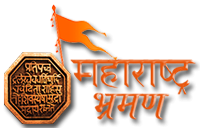Emergency Numbers:
| Police | 100 |
| Fire Force | 101 |
| Railway Enquiry | 139 |
Customs to keep in Mind :
1. You have to remove your shoes before entering a shrine.
2. Drinking alcoholic beverages on the premises or speaking in a raised voice is prohibited.
3. Women should always be properly dressed and should cover their head before entering a Sikh gurudwara or a mosque.
4. When you enter a mosque, you are supposed to step right foot first into the courtyard.
5. In some Hindu and Jain temples all leather products like shoes, belts, handbags, camera cases etc. are prohibited.
6. Many temples also expect visitors to purify themselves by washing their hands and feet under a tap or tank available there before entering.
7. No visitor in a gurudwara should keep his feet pointing towards the Holy Book or step over any one sitting in prayer or meditation.
8. In a Buddhist monastery always remember to follow a clockwise direction while spinning a prayer wheel, going around the interiors and exteriors of the monastery itself, stupa or Mani wall.
9. Inside the monastery, cushions and chairs are reserved for lamas (monks). Sit on the steps outside or on the floor.
10. Incase one gets the opportunity to meet a rimpoche (head lama) or a respected monk, it’s polite not to turn one’s back on him while leaving.
11. Also removing the hat and lowering an umbrella within the confines of a monastery is advised. This courtesy is also observed in the presence of a lama.
Currency :
The units of Indian currency are the rupee and the paisa (100 paise is equal to one rupee). Paper money comes in denominations of 1, 2, 5, 10, 20, 50, 100, 500 and 1000 rupees. Coins are in denominations of 50 paise, one rupee, two rupees, five rupees and ten rupees. Importing and exporting the currency is strictly against the rules. International airports have currency-exchange booths that are always open for arriving or departing overseas flights. A good idea would be to change certain amount of money in small denominations.
The tourists are required to make a declaration in the Currency Declaration Form given to him on arrival about the amount of money (currency or travelers’ cheques). There are no restrictions on the amount a tourist may bring into India. Cash, bank notes and travelers’ cheques up to US$ 1,000 or equivalent, need not be declared at the time of entry. Any money in convertible currencies should be exchanged only through authorised moneychangers and banks that will issue an encashment certificate that is required at the time of reconversion of any unspent money. The encashment slip is also required when paying hotel bills or travel expenses in rupees. Exchanging of foreign currency other than banks or authorised moneychangers is an offense under Foreign Exchange Regulations Act 1973.
Credit cards are widely accepted in Indian cities and larger towns, particularly American Express, Diners Club, MasterCard and Visa. Credit cards can also be used to get cash advances in rupees.
While leaving India, you can exchange the unspent rupees back to your currency. Banking facilities, are usually located in the same airport hall as the check-in counters. It is best to access these facilities before immigration, as they are not available thereafter.
Language :
In Maharashtra, the official and most common language is Marathi. However, both Hindi and English are widely spoken.
Photography :
It is probably better to ask before taking pictures of people — while some may be thrilled, others may find it offensive. Some tourist spots such as religious shrines and restricted areas may prohibit photography.
